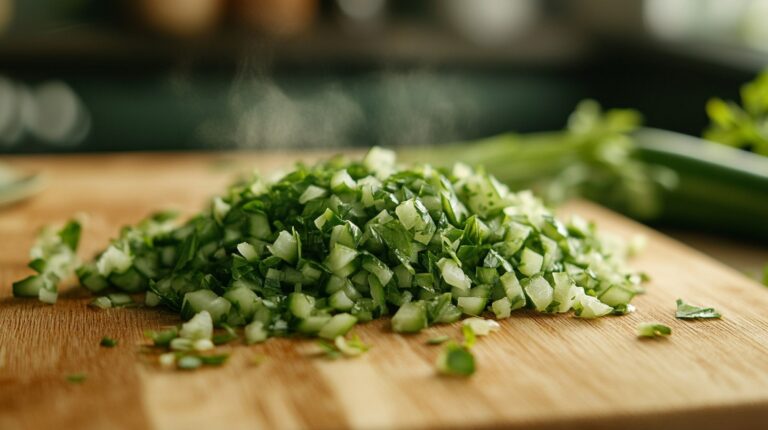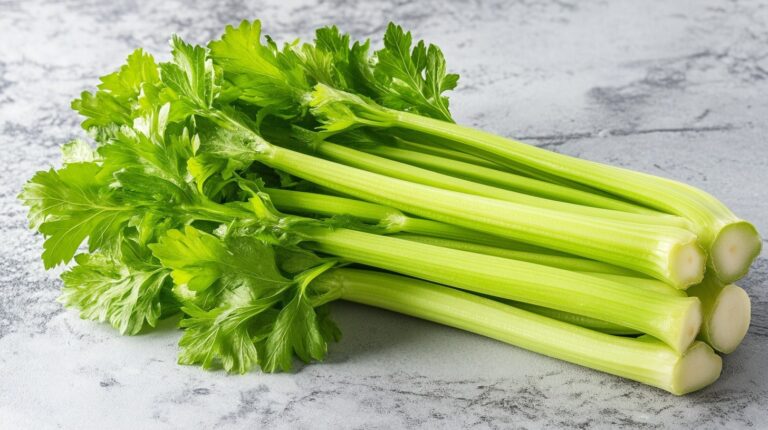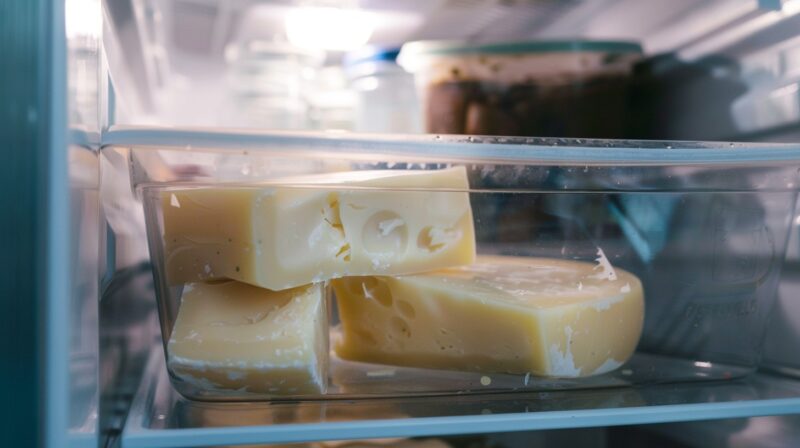As a devoted lover of Italian cuisine, I’ve learned a thing or two about how to store provolone cheese properly. For the mild provolone Dolce or the bold provolone Piccante, getting the storage right can make all the difference in maintaining the cheese’s delectable flavors and perfect texture.
Let me share with you the practical tips and insights I’ve gathered over the years. This guide will walk you through the essentials of storing provolone so you can savor its goodness for as long as possible.
Tips for Storing Provolone Cheese
- Wrap Properly: Use wax paper, cheese paper, or parchment paper first, then cover with plastic wrap or foil.
- Store in the Right Spot: Place the cheese in the warmest part of the refrigerator, usually the door, to maintain its freshness.
- Use Airtight Containers: For shredded cheese, use airtight containers to prevent moisture loss.
- Maintain Ideal Temperature: Keep the refrigerator temperature between 35°F and 40°F (1.7°C to 4.4°C).
- Check Regularly: Inspect the cheese for signs of spoilage, like mold or off-odors, to ensure it remains safe to eat.

Best Practices for Storing Provolone Valpadana P.D.O.
- Avoid Dry Atmosphere: Ensure the storage area has adequate humidity to prevent the cheese from drying out.
- Allow Airflow: If the cheese appears sweaty, it means it’s not getting enough air. Ensure it has proper ventilation.
- Regulate Temperature: Keep the cheese at a stable temperature between 41°F and 50°F (5°C and 10°C).
- Proper Wrapping: Always cover the cut part with plastic film or aluminum foil, and wrap the cheese in paper or cloth before placing it in a plastic bag with holes for ventilation.
- Avoid Contact with Other Cheeses: Store provolone separately to prevent it from absorbing other flavors.
Sweet or Sharp?
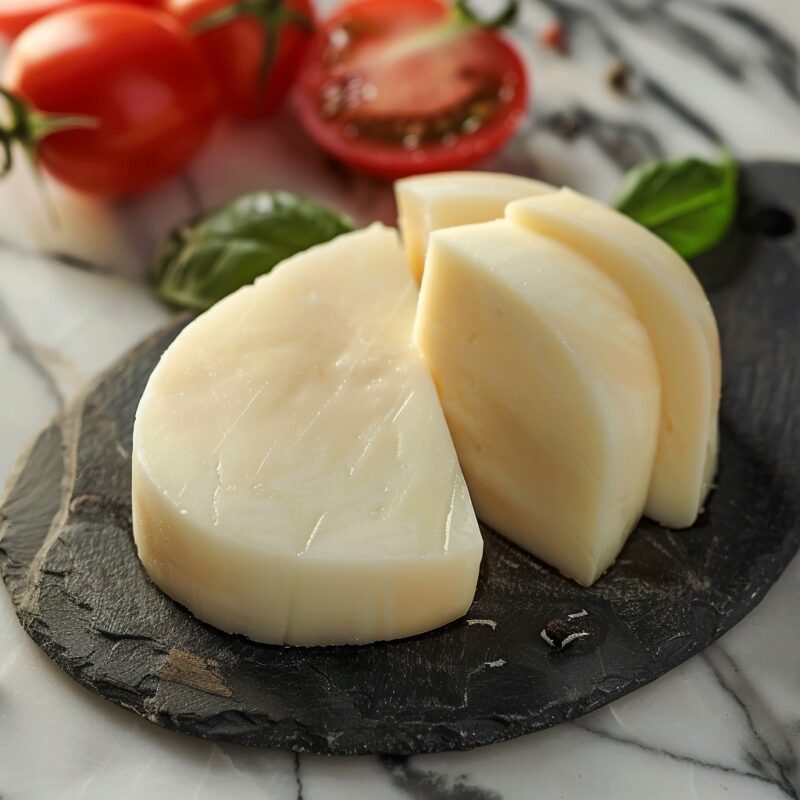
It comes in different shapes and sizes, often molded into pear, sausage, or cone shapes. Mild to sharp in flavor depending on the age. Provolone cheese comes in two main varieties:
- Dolce – is aged for two to three months, giving it a sweet and creamy flavor
- Piccante – aged for over four months, has a sharper, buttery, tangier taste.
These aging processes influence both the flavor and texture of the cheese, making proper storage crucial to maintaining its quality.
Initial Considerations Before Store Provolone Cheese
Provolone cheese is a staple of Southern Italian cuisine and has been made for centuries.
Before storing your provolone cheese, it’s important to assess its freshness and understand the form you’re dealing with. Whole blocks of cheese retain moisture better and generally last longer than shredded cheese.
Always check the expiration date and inspect the cheese for any signs of spoilage like off-odors, discoloration, or mold.
Refrigerating Provolone Cheese
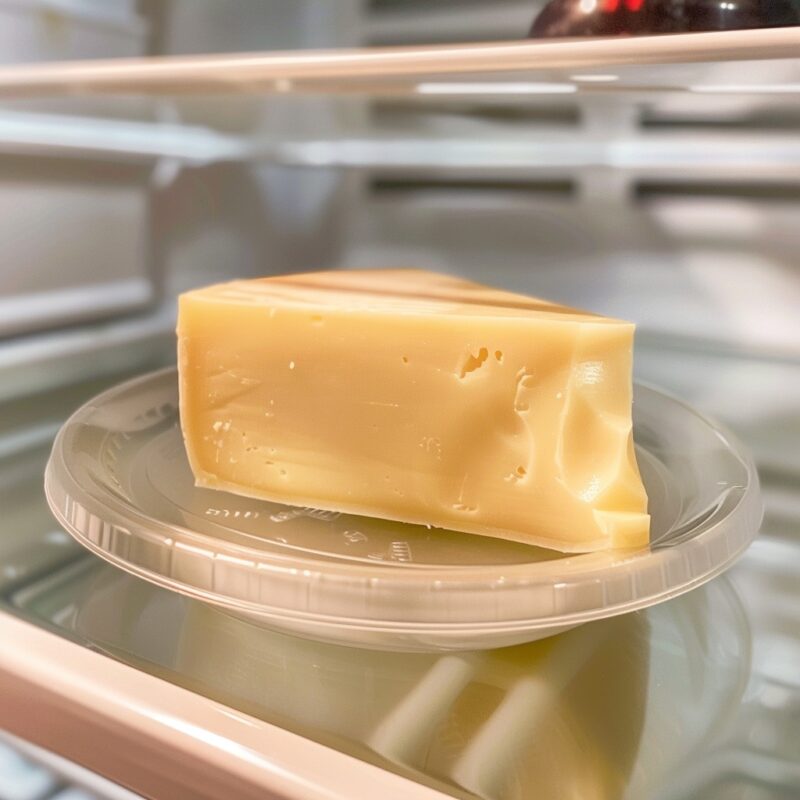
Storing provolone in the refrigerator is essential. The temperature should be consistently between 35°F and 40°F (1.7°C to 4.4°C) to slow bacterial growth without freezing the cheese. Wrap the cheese in wax paper or cheese paper to allow it to breathe, then cover it with plastic wrap or place it in a plastic bag.
This dual-wrapping method helps keep the cheese moist and prevents it from absorbing other flavors from the fridge. If your refrigerator has a specialty cheese or deli drawer, use it for optimal humidity control.
Freezing – Careful Preparation
Freezing can extend the shelf life of provolone cheese, but it requires careful preparation. Cut the cheese into small portions, wrap each tightly in cling film, and place them in a freezer bag.
Label the bag with the date and store it in a freezer set to 0°F (-18°C) or below. While freezing can cause minor changes in flavor and texture, provolone is still suitable for cooked dishes after thawing.
Store Provolone Cheese
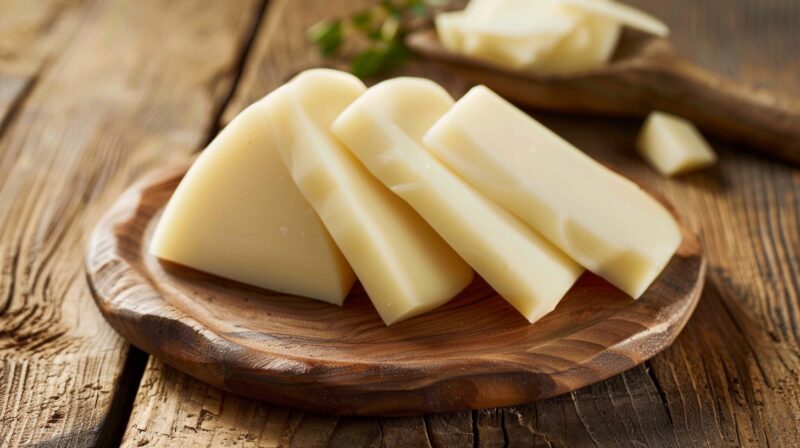
The best way to store cheese, according to experts at the Auricchio cheese factory in Cremona, is to minimize its contact with air. Despite common advice that cheese needs to “breathe,” wrapping provolone tightly in foil or cling wrap is recommended.
This method prevents the cheese from drying out or developing mold. Additionally, storing the cheese in the warmest part of your refrigerator, usually the door, can help maintain its quality. Properly stored provolone will last two to three weeks, and aged varieties may last even longer.
Seven different ways to use
- Cooking: Provolone cheese can be used in a variety of cooking applications due to its excellent melting properties. For the best results, incorporate shredded or sliced provolone into recipes where its flavor can enhance the overall dish.
- Grated over salads: You can grate provolone cheese and use it as a topping for your salads to add a rich, savory flavor.
- Incorporated into desserts (yes, you heard that right): While less common, some people do use provolone cheese in desserts, adding a unique twist to sweet dishes.
- Grilled sandwiches: Provolone cheese melts very well, making it an excellent choice for grilled sandwiches.
- Baked pasta dishes: You can use provolone cheese in baked pasta dishes to create a creamy, delicious texture.
- Casseroles: Provolone cheese can be used in casseroles to add flavor and a melted, gooey texture.
- Pizza topping: Provolone cheese can be used as a substitute for mozzarella or as an additional cheese on pizza, providing a distinct flavor.
Handling Provolone with Mold
If your provolone cheese develops mold, don’t toss it out. As a semi-hard cheese, it can still be used even with mold growth. Simply cut off at least an inch around and below the mold spot.
Be careful not to let the knife touch the mold to prevent spreading spores. This ensures you can still enjoy your cheese without compromising safety.
Proper Handling and Food Safety
Handling provolone cheese correctly is vital to prevent health risks. Always keep the cheese refrigerated and well-wrapped to protect against moisture and air. Store it away from strong-smelling foods to avoid odor absorption.
Be vigilant for signs of spoilage such as mold, discoloration, or off-odors. If you find mold on a block of cheese, cut off at least an inch around the moldy spot and consume the rest. For shredded or sliced cheese, it’s best to discard it entirely if mold appears.
If you’re a fancier of cheese, then Muenster Cheese is a must-try. There are different ways you can use it in your meals, which i will gladly show you!
Summary
The main things to remember are keeping it wrapped up tight, stashing it in the fridge, and not letting too much air or moisture get to it. Follow those simple guidelines and your provolone will stay fresh and packed with flavor for way longer. Not rocket science, but little details like that can make a big difference when you’re trying to get the most out of a tasty cheese like this.
In essence, ensure you wrap the cheese properly, store it in the right spot, use airtight containers, maintain ideal temperatures, check for spoilage, avoid dry atmospheres, allow proper airflow, regulate temperatures, wrap it correctly, and keep it separate from other cheeses.
At the end of the day, it’s all about finding what works best for your own situation and preferences. Everyone’s got their own little tricks when it comes to storing specialty foods. But hopefully, these tips give you a solid starting point.



